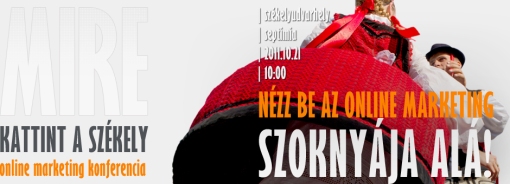Using mobile for successful and innovative comms planning
“Research from UM London shows that consumers are using their handsets to keep entertained and informed, while brands – particularly through the use of apps – have a great opportunity for direct engagement.
UM’s Phone:Smart research paints a picture of the dominant role that mobiles are now playing in our lives. No longer a simple communication device, it has evolved into an irreplaceable life management tool and an “always by your side entertainment vehicle”. With mobile now firmly established in the hearts of consumers and advertisers, the mobile internet – and by implication mobile marketing – is exploding. UM’s new research gives up to the minute insight on how the medium is impacting on the lives of our clients and their consumers – and how we can best use the channel for successful and innovative communications planning.
Key findings from Phone:Smart: A source of entertainment
Our mobiles are now as much a source of entertainment as they are of communication. Forty seven percent of us are using mobile for entertainment, while 44% use it as an information tool. Our hyperactive desire to be continuously switched on has led to mobiles being perfectly placed to act as our media hub. Mobiles can fill multiple need states depending on what we want from them at that moment in time.
What UK adults are using their mobile phones for?

Filling time
We’re increasingly using our phones to kick back and fill time. Mobile gaming has universal appeal across all age groups. When we looked at the frequency with which we play games, we found that an astonishing 44% of the Early Majority are playing games on a weekly basis. This rises to an outstanding 75% of Innovators.
Whether you are young at heart and want to knock down a wall with angry birds, or reward yourself long-term with Farmville or Mafia Wars, or even go for something more intellectual like Sudoku or The Times crossword, there are games out there for you.
Media meshing
Mobile is at the centre of the ‘media meshing’ phenomenon – with consumers often using their mobiles for search, gaming and playing with apps while consuming other media at the same time. This offers advertisers the chance to make old formats more exciting. With 58% of consumers texting or calling, 32% accessing the mobile internet and 31% downloading apps at the same time as viewing, TV suddenly becomes more interactive. And as we learn how to interact with advertising in this way, it makes it easier for newer formats which are more opt-in in nature, such as augmented reality, to really break through.
An increasing desire for continuous internet access
The desire to have continuous access to the internet is on the rise, and the features that are driving this are for the most part social. Thirty one percent of the population use mobile internet on the move (55% have access) and this is only set to grow.
The range of ways mobile internet is being used is diverse; the top mobile internet activities are using search, looking at news headlines and accessing travel information, but entertainment based functions are also on the rise, e.g. social networking and games. And things like foursquare and Facebook places are bringing these two elements together.
As the mobile internet grows, we’re getting used to immediacy and having everything at our fingertips. As we do, we should become more open to advertisers and brands seeking us out through our location and behaviour, something that should resemble a kind of real-life behavioural targeting.
Brand love: there’s an app for that…
Apps in particular provide brands with a great opportunity to build brand love. Our research has shown us exactly how closely consumers’ choices reflect who they are. Mums for example, index most highly on downloading baby & child care apps (index of 353 vs. other smartphone users) but also score heavily against beauty & fashion apps (265) and celebrity gossip (257); these choices showing how apps can meet her needs both as a mum and as a woman.
This presents a great opportunity for brands, but the personal nature of the channel means they have to get it right. Over the past decade we’ve seen a change in the way consumers want to interact with brands. They want two-way relationships and the value they derive from these relationships now has to be more tangible. Apps are a great way to do this, but brands really need to consider exactly how they will add value.
The text message is the killer app
Despite the rise of the smartphone, the ‘killer app’ of the mobile age is still the text message; 66% of people text at least once a day. It’s a lesson to remember that apps aren’t the only format available to an advertiser. Consumers are increasingly open to contact from brands through mobile. Free stuff will always be popular, with over 41% of consumers open to this type of communication, and text messages are a great way to reach people and get them to interact.
Three things brands should look to act on:
1. Mobiles can mean everything to everyone, but in reality they often mean different things to different people. Whether they are your tool for communication, entertainment or information, we are all demanding more than ever before from our mobiles.
Mobile gaming is an area that now holds universal appeal. Much like traditional media such as TV, games now have many genres and can therefore easily appeal to different audiences. It is the highly engaging and addictive nature of games though that offer brands huge new opportunities.
2. Our mobiles go with us everywhere. Always on and always exciting, brands can now reach consumers wherever they are. But brands need to get clever with location-based marketing. For years we have analysed consumers, looking at who they are and what they buy, and we now have a massive opportunity to literally engage with them on their purchase journey.
3. Our third & final point to take away is that it’s all about me! Mobiles are hugely personal; they represent us in the way they look, the apps we download, and they hold all our secrets. The long-term gain for brands can ultimately be to tap into our personalities and passions. Brands can build love by building the right app for the right person.
Consumers are open to contact from brands

About the research:
Phone:Smart consisted of an online quantitative survey of n=1060 mobile phone users and 25 in-street intercepts. The research was undertaken via UM’s proprietary Curiosity Panel – which consists of 10,000 nationally representative consumers.
UM London
source: brandrepublic.com





